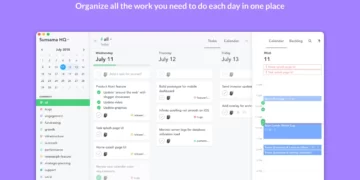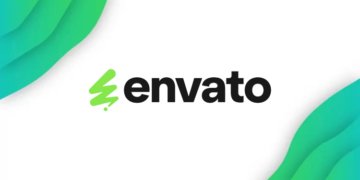Caffeine is Reader Supported, If you do buy through links on our website, we may earn a commission at no extra cost to you. Read the full disclaimer here
If you are anything like me, then you LOVE tech and everything about it. The technology industry is forever changing, which means there is always space for new content, and you might have some things to say, or some knowledge to share about the tech industry, and that’s why it’s a good idea to start a tech blog in this day and age.
starting a tech blog is one of the best ways to get your voice heard online, especially if you provide value to your readers, and don’t waste their time as well as researching the topic beforehand.
How to Start a Tech Blog
1. Decide on The Type of Your Blog
before we start building the website, we need to decide on the type of website we will build. There are websites that do everything, but these websites have a large editorial team, and you don’t have that yet. there are a lot of types of blogs which we will mention below.
Tech News Website: Technology always changes, you never know what the next apple keynote showcases, or when Valve will announce their new console. Being a reputable source of tech news can be really helpful, and make you an authority in the tech niche. Although you should be careful, you need to be always on the lookout for new tech news, and also be available to tune into any industry events that may occur, and always try to be the first to deliver it.
Tech Reviews Website: Starting a blog focused on Reviewing Technology for potential buyers, you can also add amazon affiliate links to make a commission when your audience buys from your link.
Tech Tutorials Website: everyone has looked up a tutorial at least once in their lifetime. Creating How-To tutorials can be very beneficial and help you grow an audience that trusts you.
Programming Website: if you have a background in programming, you can easily share your knowledge and help your audience solve their pesky programming problems.
you can start a tech blog around other types of blogs, creativity is the only thing hold you back.
2. Picking Your Blogs Niche
now that you’ve decided on the type of your blog, you need to decide on the niche. Let’s take reviews as an example, you could start a tech blog where you review mobile phones like KYM or review audio devices, and so on.
There are a lot of niches you can start a tech blog within, I will mention some of them below, but you can expand into more niches later on when you have more output.
- Mobile Devices
- Tablets
- Smart Home
- Computer Hardware
- Software
- Gadgets
- Audio Devices
- Photography
- Content Creation
- Laptops
- Gaming
- Networking Devices
- Security Devices
You get the idea. If you combine a type from step one, and a niche from step two, then you can decide on the focus of your blog. Starting a tech blog without a specific niche can be very challenging, and competitive but you’ll always have something to write about.
3. Pick Your Blogging Platform
When it’s time to pick your blogging platform or CMS (Content Management System), you will find a lot of options, but one of them will suit over 99% of you, and that is wordpress.org. There is also Blogger, which is free and made by Google, but you’ll find that it’s very constricting with little customization options and no plugins that will help with SEO and more am
For those reasons, I will suggest wordpress.org NOT wordpress.com as they are different. the CMS itself is free, but you need somewhere to host it, and unless you have a server where you are already hosting a website, then you need to purchase it, which we will talk about in a later step.
4. Decide on a Name and Domain
This is an important step when you start a tech blog, picking a name and domain will stay with you indefinitely, unlike the design of your website which you can change at any time.
Pick a Broad Name: Make sure you don’t add words like “tablet” or “gaming” as that will lock you down into your niche and hinder your expansion into other niches unless you plan on staying in that niche indefinitely.
Make it brandable: Having a name that can be remembered is crucial to get recurring visitors. Some examples are Engadget, The Verge, Gizmodo, which are all easily remembered. Your name doesn’t have to include the word Tech in the name to be big.
Get a .com Domain: When picking your domain name, you should purchase a .com domain as that’s the norm in domain names, and most people are comfortable with it.
Be Creative: Hardly any good domain names are available, especially if you pick a short name, you can use a domain availability checker to check if your name is available, but that’s probably not the case, that’s why I recommend adding words like “The ” or “Blog” in the domain name.
I would suggest using Namechk to see if your name is available on social media, and you should claim the name that corresponds with your domain name right now before someone claims them.
5. Purchase Your Hosting and Domain
Now that you’ve decided on a name you, need to purchase your domain name and find a place to host your website. Let’s start off with the hosting, There are 2 options available for hosting, which are traditional web hosting, and Cloud Hosting, and while there are some differences between them most newer websites will prefer to opt into cloud hosting, since the cloud infrastructure does have more advantages.
The Best Option for cloud hosting will be Elementor Cloud, since it is one of the cheapest Managed Hosting providers, and unlike other services, the price won’t increase after the first payment.
Elementor Cloud is based on the google cloud and comes with unlimited WordPress websites, Daily Backups, Free Domain, a Free CDN, and Elementor Pro, which is the leading WordPress page builder for free, all for a flat cost of $99/year
If you decide to opt into cloud hosting, then we recommend Hostinger for newer websites needing web hosting.

Their WordPress Starter Package has everything you could need, as well as business emails, which will make your website look way more professional, and provide unlimited bandwidth, as well as a free domain.
If you didn’t get your free domain from Hostinger, Then you can purchase it through NameCheap, but you won’t get the free professional email accounts.
You should get familiar with the server dashboard if you need to do any server-level changes, which aren’t that common other than installing WordPress, but it’s better to know than not. I can’t walk you through it, as that’s different from provider to provider.
to start editing your new sparkly website, just go to yourdomain.com/wp-admin to access the login page.
7. Customize Your Websites Design
Now onto the fun part! Your website’s design is important as that’s what your visitors will see before they start reading.
But adding a lot of animation and custom graphics isn’t the answer, as that slows down your website which will hurt your SEO Rankings. There are a couple of options that you have, which are:
Get a Custom Theme: This is the best option as it keeps your website unique, but also the most expensive. a decent theme will start at least $500 for just some barebones capabilities and go up into the tens of thousands. I wouldn’t suggest this at an early stage because you haven’t started earning revenue from your website yet, But you should keep it in mind at later stages.
Purchase a prebuilt theme: This is what most people do when starting a tech blog. There are multiple online marketplaces for themes that offer prebuilt ones anyone can buy, but the biggest one with the most options is ThemeForest, Most themes come with a lot of integrated features, so you won’t need to install more plugins than you need, which will slow down your website. Most Themes now come with a lot of customization options, so you won’t need to worry about having the same theme as someone else.
Use a Free Theme: this is by far the worst option, but it is an option, most free themes won’t be as optimized as paid ones, and they will usually have the creator’s name in the footer. although there are some good ones like Astra and GeneratePress which you can use.
Use a Page Builder: Page Builders are drag-and-drop apps to build your website easily. Elementor is the biggest Page Builder for WordPress and Integrates well with the free version of Astra, but a prebuilt theme is still a better option
when you start a tech blog you should always think of the logo. In this step, you should also create a logo to go along with your design and color palette.
You can go as simple or complex as you want, just think about the size, for example, if you have a very complex logo and you shrink it small enough to put as a favicon, which is the icon that appears next to the website name in the tab, it will be ineligible and very hard to understand.
8. Install Essential Plugins
Plugins for WordPress are practically essential when you start a tech blog as they can help protect your website, optimize load speed, make it look better, and add extra capabilities. and while there are a lot of types of plugins and it might make sense to install a lot of plugins, but that would slow down your site speed tremendously, so only install the essential plugins.
Security Plugins: these plugins have functionalities to protect your website like limiting login attempts, changing the login address, adding 2-factor authentication, or just protecting it from malicious activity and spam comments.
SEO Plugins: SEO plugins help with ranking on the Google search results page and get more organic visitors. These are the first plugins you should install when you start a tech blog, especially because tech is a very competitive niche and you need any help you can get.
Visual Plugins: This category includes plugins like Elementor and other plugins that change the Front-End of your website, which is what your visitors see when they visit. these plugins can also be required for your theme to work properly. You should be careful when installing visual plugins, as installing a lot might break each other, slow down your site, or even destroy the performance of your website.
There are more plugins, such as ones that help you distribute ads on your website, and analytics plugins. code editors and image compressors. But to reiterate, you should only install plugins you need or think are worth it, and always check your website’s page speed regularly using Page Speed Insights.
9. Create Important Pages
a website is not complete without the extra pages. even though they are not required, they will make your website look more professional and will be required to be able to monetize it, the important pages are the following:
About Us: This page is probably the most read page by your audience when you start a tech blog, as that’s where you will explain who you are, the vision you have, and what you will deliver for your audience.
Contact Us: if you plan on working with brands in the future, or just want to offer assistance to your audience, then you need this page.
You will receive amazing opportunities from this page such as attending events, receiving products, and getting sponsorships. You will need to add a contact form to your website, and this guide can help with that.
You can also create an FAQ page when you start getting repeat questions in your contact form.
Privacy Policy And Disclaimer: These pages are where you will tell your audience what you will exactly do with their data and information that you receive when they visit your website. This information will protect you legally and you need to make sure it is correct.
I suggest using Termly to create these pages, they have a free and a paid plan, and they will cover your website from multiple bases.
You can always add more pages like a work with us page.
10. Start Writing
Your writing skills are directly proportional to the growth of your blog, if you don’t know how to write good content, then your readers won’t spend much time on your website, good website design isn’t the reason your audience will read your blog.
if you create strong and powerful content, then eventually your readers will frequent the site, and help you rank first on the search results page.
whenever you start writing, you should decide the type of post you plan on writing, there are only two types of posts you should focus on when you start, which are:
Response Posts: Response Posts are posts that answer a question that is typed in the search bar, these posts are about 800-1500 words and aim to answer the question and teach the audience more about the product mentioned in the article.
Pillar Post: This is what you should focus on when you start a tech blog, Pillar Posts are some of the highest on the Search engine results page (SERP). These posts are at least 1500 words and go into extreme detail about a certain topic, Like this post!
Pillar Posts are obviously better, but they take longer to write and research the topic, but the SEO benefits make them worthwhile. There are multiple types of posts you can write, which are:
- How-To Guide
- Product Review
- News Article
- Tips and Tricks
- Mistakes To Avoid
- Interviews
- List Post
The categories mentioned above should have a healthy amount of content you can produce from them and easily create some pillar posts. You should submit them to the google search console to be indexed, as takes time to climb through the rankings, but you shouldn’t expect to get onto the first page or even the second.
When you start a tech blog, writing a ton of content at the start is better, but you should be consistent and post at least once a week, but be ready to increase your output and write pillar posts regularly.
Once you can’t find any more ideas, you can scan competitors’ blogs to find ideas for yourself. or write about personal stories or and other happenings in the industry.
11. Promote Your Blog
Now that your blog has amazing content, you need to get some readers to read your articles. Acquiring an audience needs consistency to work. There are multiple ways to acquire an audience, which are:
Social Media: Social Media advertising has two pillars, Paid, and Free Advertising. Paid Advertising is like using Google or Facebook Ads. Free Advertising is just sharing your content in the appropriate Social Spaces.
You need to pick the platform carefully, it wouldn’t make sense if you advertise your tech article in a cat Facebook group. Some Examples of places to advertise are:
Tech Facebook Groups: Maybe Advertising in cat groups inst appropriate, but Tech Facebook Groups are. Start Contributing to those groups so you provide actual value to the group, also make sure it has at least a couple thousand followers so it is worthwhile.
Reddit: Reddit has a lot of communities that focus on very niche communities which will help find readers, but Reddit is very strict about advertising, so make sure to also contribute to the community that you are focusing on.
Guest Posting: When you start a tech blog, then guest posting is very valuable. Guest Posting is where you contact a website that offers this and send them your article to post on their website while giving you proper credit. Some websites want you to pay to guest post on their website, and some don’t, but it’s hard to find websites that offer this, but if you want to try it out, then you can contact us and pitch your article.
Email Newsletter: An Email Newsletter doesn’t gain readers for your blog, but it helps retain them and keep them coming back by collecting their email and sending them updates about your website and maybe even some special curated content.
12. Monetizing a Tech Blog
you shouldn’t start a tech blog with the main focus being monetization, as that comes later in the blog timeline but you should always know how to. There are a couple of types of Monetization, which are:
Display Ads: Display ads are the ads you see in between the content and in the website sidebar. This is usually the first step to start making passive income from your blog, The easiest way to start with display ads is Google Adsense.
Affiliate Marketing: Affiliate Marketing is based on advertising products to your audience and receiving a small commission every time your audience purchases a product.
Affiliate Marketing is great for beginners as it doesn’t require a large audience, you just need to make great product recommendations and advertise products that will work with your niche.
The easiest way to get started is by signing up for the Amazon Associates Program, but if you want to recommend some software tools, then I would suggest PartnerStack, as software has higher commission rates.
Sponsored Posts: As your audience reach grows, brands will reach out to you and pay you to speak about their products and review them. This won’t happen for new tech blogs, as you need to have a sizeable audience to receive partnership requests.
13. Next Steps
Your blog is now functioning, but it’s pretty barebones. The first thing you should do is claim your property in GSC and submit every article you publish as that will get it indexed faster, and will help you track your performance.
Make Sure to install some security plugins, most importantly one that can change the login page link and one that limits the number of login attempts per IP.
The next step should be adding Google Analytics to your website, which will help you track performance and site visitors.
You should also start an email list, which will grow with your website and will be helpful to get returning visitors. You’ll be thankful that you started sooner than later.
If you have extra time on your hands, you should also create content on other mediums like Instagram and youtube, just make sure the quality doesn’t decrease when you increase your output.
14. Final Words
So, you made it! if you followed this guide, then you should have a functioning tech blog and a batch of content and be growing slowly but surely. Make sure to always make quality content and stay persistent.
Everyone will be discouraged at some time or another, and it’s okay to fall down, but you should always get back up and continue on your journey, as your future self will thank you.












